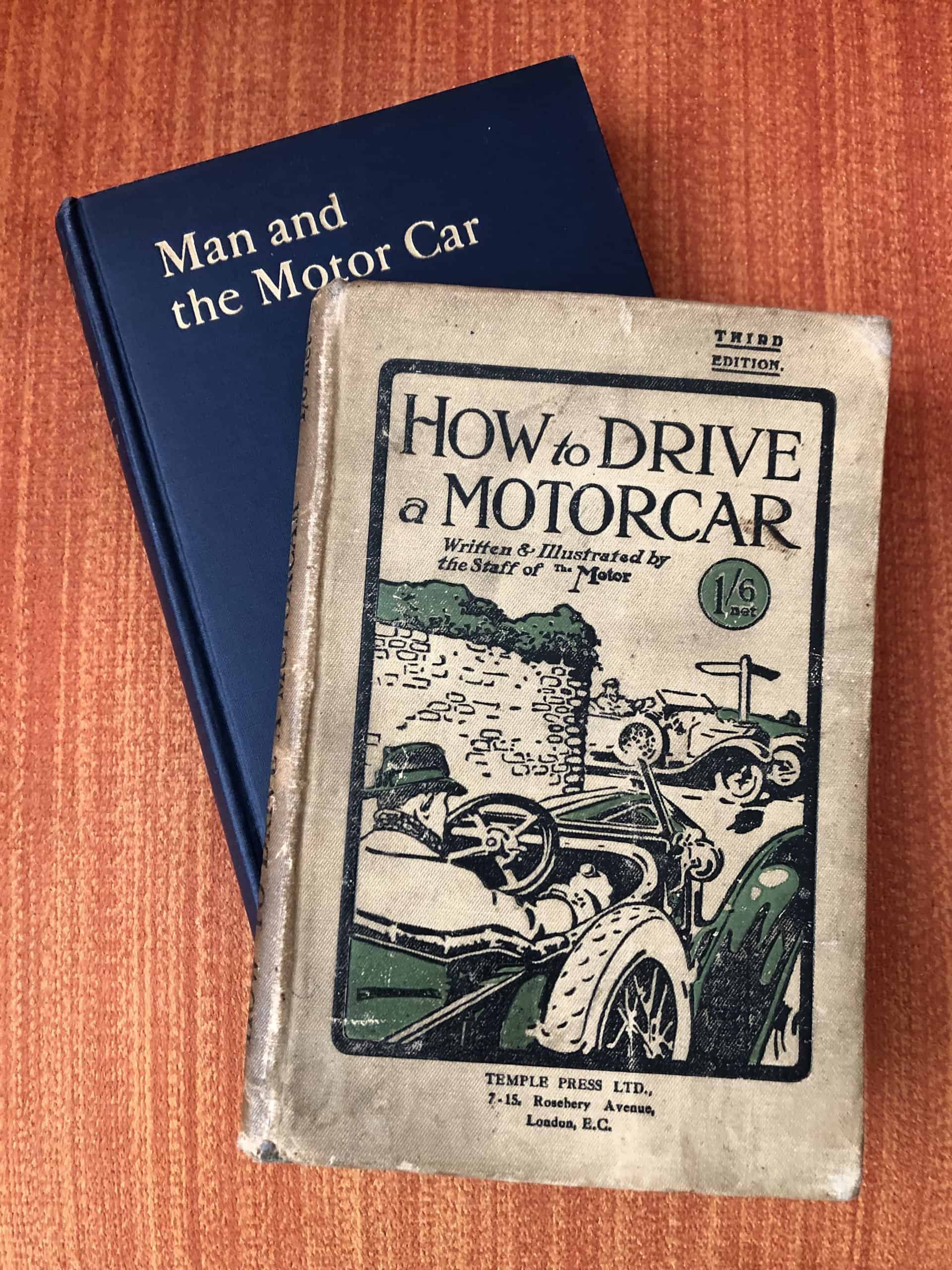At the risk of an email response from Lyn St. James, I share this quote:
“Nevertheless, there are certain situations in which one finds it impossible to concede that the average lady driver is the equal of the average male.”
That quote is from How to Drive a Motorcar: A Key to the Subtleties of Motoring, Third Edition, produced sometime in the first dozen or so years of the previous century by the staff of the British magazine, The Motor.
The book spans 138 now time-tinged pages and includes 15 chapters, the 13th of them entitled “Lady Drivers.”
Other chapters include “Training the Eye,” “Starting on Hill,” “Skidding: Its Dangers and Safety,” and there is even a chapter “The Use and Misuse of the Horn.”
Ah-OOGha!

While the author of the chapter on lady drivers notes that he “has been driven round Brooklands track by lady drivers at speeds… in excess of the legal limit, and felt perfectly content and quite safe…
“It is, however, on the odd occasion of the emergency that the lady driver is not so likely to act with precision and, above all, absolutely instantaneously.”
The fault, he adds, lies not with the lady driver but “is purely a matter of Nature’s ordinances.”
I came across How to Drive a Motorcar as I was going through bookshelves and boxes, figuring out which volumes to keep and which to pack up for donation to the library at McPherson College.
Thoughts of the capability, or lack thereof, of lady drivers reminds me of the time I was attending some new car launch. I don’t remember the car, but I do remember we were in Palm Springs and the driving route took us up Mt. San Jacinto with a coffee break in the mountain-top artists’ community of Idyllwild.
My driving partner that day was Denise McCluggage, who had broken the gender barrier as a sportswriter at the New York Herald-Tribute, who may have been the first woman granted access to Gasoline Alley at Indy, and who held her own on the track racing sports cars in the 1950s and ’60s against the likes of Stirling Moss, Phil Hill and the rest.
Anyway, Denise had driven the car up the road to Idyllwild and I was to drive it back down the other side. But after the coffee break, I climbed back into the passenger’s seat.
“Don’t you want to drive?” she asked.
I said I was having too much fun enjoying her car-control skills and was learning more about the car’s capabilities riding that I ever might experience behind the wheel myself.
Which brings me to another book with a seemingly obvious sexist outlook. This one is Man and the Motor Car, published in 1936 for the Board of Education, City of Detroit, as a driver’s-training manual.
Here there is no chapter on Lady Drivers, though there is a chapter “The Driver — His Nature and His Habits” and another, “The Driver — His Psychology and His Attitudes.”
Here, however, “Man” is meant as any adult human being, and Chapter 3 begins with an illustration of a woman, her gloved left hand on the steering wheel and her gloved right hand on the floor-mounted gear-shift lever.
She reappears in a section on distracted driving — yes, an issue even decades ago — about how to deal with a bee, wasp or even a mosquito that flies in through an open window, and again to illustrate “Glare and Its Effects” and in driving in a dust storm.
The chapter on the driver’s nature and habits includes a section with the subtitle, “Are Women Worse Drivers Than Men?”
“…the answer is: No,” the section concludes.
“An analysis of the records of 7,600,000 licensed drivers reveals that in one year, one man in every twenty-one had an accident while the corresponding figure for women was one in ninety.”
It added that 1 male driver in 726 was involved in a fatal accident while the same statistic for female drivers as 1 in 3,558.
“It must be remembered, however,” the author added, “that men drive more than women and under more hazardous conditions. The operate trucks, buses, taxicabs, and business requires them to make long trips in all kinds of weather.
“To obtain a true comparison one needs to study the records of men and women who both used the same type of equipment over the same routes. Such a record is available for a group of Pennsylvania cab drivers. It reveals that women have more accidents but less serious ones than men.”
Meanwhile, “The young driver is the poorest driver on the road, according to accident records…
“There is no physical reason why… The principal reason for their bad record is that they lack judgment — they fail to appreciate hazards. Because they display a show-off, reckless attitude, they place themselves in dangerous situations that a more experienced motorist would avoid.”
And thus the need for such a book and for driver training in high schools, training for both genders.
“If we are to approach the traffic problem successfully, we must have a new generation of drivers; a generation which will not take pride in driving recklessly, but one which will be proud of its ability to drive safely.”





